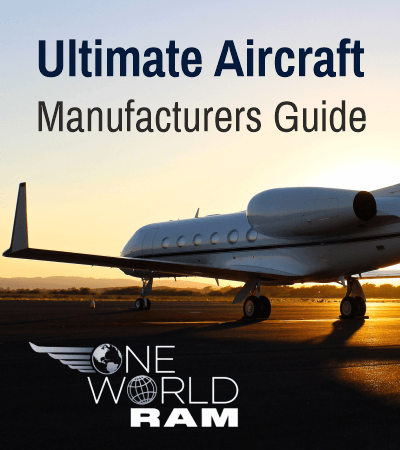Step into the world of aviation excellence with the Diamond Katana, a revolutionary two-seat light aircraft that has redefined the standards of modern flight training. This comprehensive guide explores how this Austrian masterpiece combines elegant design with exceptional performance, making it a standout choice for both aspiring pilots and experienced aviators.
Understanding the Diamond Katana
The Diamond Katana emerged as a groundbreaking addition to the aviation landscape in 1991, with its official introduction following in 1992. Since 1994, Diamond Aircraft has manufactured over 1,000 units, establishing the Katana as a prominent fixture in general aviation. The aircraft’s distinctive features include:
- Low-wing configuration for enhanced stability
- Side-by-side seating arrangement for optimal training
- Modern aesthetic appeal that attracts new aviation enthusiasts
- Innovative design philosophy mirroring its namesake Japanese sword
- Precision-engineered performance characteristics
What Makes a Katana a Diamond Katana?
The Diamond Katana distinguishes itself through an exceptional fusion of engineering prowess and elegant design principles. Its composite construction creates a lightweight yet robust structure, delivering impressive performance without compromising fuel efficiency. The aircraft’s defining characteristics include superior visibility from the side-by-side cockpit configuration and a low-wing design that ensures outstanding flight stability.
The History and Evolution of the Katana
Following its maiden flight in 1991, the Diamond Katana made its grand debut at the 1993 Paris Airshow. The aircraft’s introduction coincided with a crucial period when flight schools sought modern alternatives to aging training fleets. Key milestones include:
- 1991 – First flight
- 1992 – Official introduction
- 1993 – Paris Airshow debut
- 1993 – North American demonstration tour
- Continuous refinements based on user feedback and technological advances
Design Elements of a Diamond Katana
The Diamond Katana’s design philosophy seamlessly integrates form and function. Its aerodynamic profile features:
- Streamlined fuselage for reduced drag
- Optimized wing shape for exceptional stability
- Modern composite materials for structural integrity
- Ergonomic cockpit design
- Balanced control surfaces for precise handling
Materials Used in Diamond Katanas
The aircraft’s construction primarily utilizes carbon fiber reinforced polymer (CFRP), offering significant advantages:
- Superior strength-to-weight ratio
- Enhanced corrosion resistance
- Improved vibration absorption
- Extended operational lifespan
- Glass-reinforced canopy for optimal visibility
Craftsmanship and Techniques
Diamond Aircraft’s manufacturing process combines modern technology with traditional craftsmanship values. The production involves:
- Rigorous quality control throughout assembly
- Specialized technicians with extensive training
- Advanced composite layering techniques
- Precise component alignment
- Ergonomic cockpit design integration
Performance Aspects of a Diamond Katana
The Diamond Katana sets new standards in aviation with its exceptional performance characteristics. The aircraft’s Rotax engine delivers quick starts and responsive throttle control, instilling confidence in pilots of all experience levels. Its modern design combines with precise handling to create an aircraft that excels in both training and practical operations.
- Approach speeds as low as 50 knots while maintaining safe stall margins
- Exceptional visibility for enhanced situational awareness
- Responsive yet stable control inputs
- Unique rudder/brake interaction system
- Shorter landing distances compared to traditional trainers
Cutting Efficiency and Balance
| Performance Aspect | Benefit |
|---|---|
| Approach Speed | 50 knots (vs. typical 57 knots) |
| Landing Characteristics | Reduced float, positive touchdowns |
| Handling | Responsive yet stable control |
| Fuel Efficiency | Optimized Rotax performance |
Durability and Maintenance
The Diamond Katana revolutionizes maintenance efficiency in training aircraft through its innovative design and reliable Rotax engine. The composite construction offers superior durability compared to traditional aluminum aircraft, effectively resisting corrosion and metal fatigue.
- Streamlined 100-hour inspections reducing downtime
- Cost-effective engine maintenance and overhaul
- Enhanced durability through composite construction
- Increased aircraft availability
- Lower long-term operating costs
Buying Guide for Diamond Katanas
The Diamond Katana represents a unique segment in the light aircraft market, with over 1,000 units produced since 1994. This Austrian-designed two-seater combines modern aesthetics with practical performance, making it particularly attractive to flight schools and private owners seeking efficiency and reliability.
Factors to Consider When Purchasing
- Operational requirements and intended use
- Maintenance history and component status
- Rotax engine condition and time before overhaul
- Avionics suite compatibility with training needs
- Composite construction condition and repair history
- Annual utilization rates impact on cost efficiency
Top Brands and Manufacturers
Diamond Aircraft Industries stands as the exclusive manufacturer of the Katana series, pioneering composite aircraft construction since 1994. The evolution from the original DV20 to the current DA20 series showcases continuous refinement and improvement in design and performance.
| Manufacturer Detail | Specification |
|---|---|
| Primary Manufacturer | Diamond Aircraft Industries |
| Production Start | 1994 |
| Construction Type | Advanced Composites |
| Model Evolution | DV20 to DA20 Series |





Leave a Reply